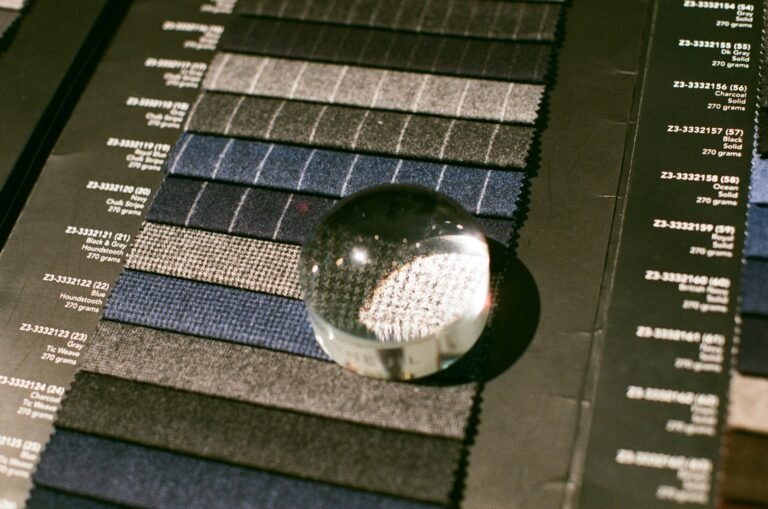Unveiling the Legacy: A Historic Expedition of the Modern Suit
The Evolution of the Modern Men’s Suit: A Journey through History and Culture
When we think of a well-dressed man, one of the first images that come to mind is often that of a gentleman in a sleek and stylish suit. The modern men’s suit has become a symbol of sophistication, elegance, and professionalism. But have you ever wondered how this iconic garment came to be? In this article, we will explore the fascinating history, evolution, and cultural influences that have shaped the modern men’s suit into what it is today.
The Origins: From Military Uniforms to Royal Courts

The roots of the modern men’s suit can be traced back to the early 19th century when it emerged as a response to the changing needs of society. At that time, military uniforms heavily influenced men’s fashion. The tailored jackets, trousers, and waistcoats worn by soldiers provided the foundation for what would later become the modern suit.
As the Industrial Revolution transformed Europe, a new class of affluent businessmen emerged. These individuals sought to emulate the elegance and refinement of the aristocracy. The suit became a symbol of their social status and success, and it quickly gained popularity among the upper classes.
The Victorian Influence and Dandyism

One of the key figures in the evolution of the modern suit was Beau Brummell, a dandy and fashion icon of the early 19th century. Brummell introduced the concept of a well-fitted suit, emphasizing simplicity and elegance. His influence on men’s fashion was so significant that he is often credited with popularizing the modern suit as we know it today.
Incorporating Cultural Influences: The Rise of the Tuxedo and the Nehru Suit

As the suit continued to evolve, it absorbed cultural influences from around the world. One notable example is the tuxedo, which originated in the United States in the late 19th century. The tuxedo, with its satin lapels and bow tie, was a more formal alternative to the traditional suit. It quickly became a popular choice for evening events and formal occasions.

Another example of cultural influence can be seen in the Nehru suit, which takes its name from Jawaharlal Nehru, the first Prime Minister of India. The Nehru suit, characterized by its mandarin collar and buttoned-up front, gained popularity in the 1960s as a symbol of global fashion and cultural exchange.
Suiting Up for the Silver Screen

The golden age of Hollywood played a pivotal role in shaping the modern suit’s image and cultural significance. Discover how leading men like Cary Grant, Humphrey Bogart, and James Dean became style icons, showcasing the versatility and timeless appeal of tailored suits on the silver screen. Explore the influence of costume designers and fashion trends in film on men’s fashion preferences, sparking new trends and redefining the boundaries of sartorial elegance.
The Modern Suit: A Blend of Tradition and Innovation
Today, the modern men’s suit continues to evolve, blending tradition with innovation. Designers and fashion houses constantly push the boundaries, experimenting with new fabrics, cuts, and styles. However, certain features have remained consistent throughout its history.
The suit jacket, with its structured shoulders and tailored silhouette, remains a timeless classic. The trousers, typically tailored with a flat front or pleats, provide a sleek and polished look. And of course, the waistcoat, although less common in modern times, still adds a touch of elegance and formality to the ensemble.
While the suit’s basic structure has remained relatively unchanged, cultural influences continue to shape its details. For example, the Italian suit is known for its slim fit and emphasis on craftsmanship, while the British suit is renowned for its attention to detail and traditional tailoring techniques.

In recent years, there has been a growing trend towards more casual and relaxed styles. This can be seen in the popularity of unstructured blazers, knitwear, and even sneakers paired with suits. This shift reflects the changing attitudes towards formal attire and the desire for comfort and versatility in men’s fashion.
In Conclusion
The modern men’s suit is a testament to the rich history, evolution, and cultural influences that have shaped it into the iconic garment we know today. From its origins in military uniforms to its incorporation of cultural styles, the suit has adapted and transformed over time while maintaining its status as a symbol of elegance and sophistication. As fashion continues to evolve, the men’s suit will undoubtedly continue to evolve with it, embracing new styles and influences while remaining a timeless classic.







